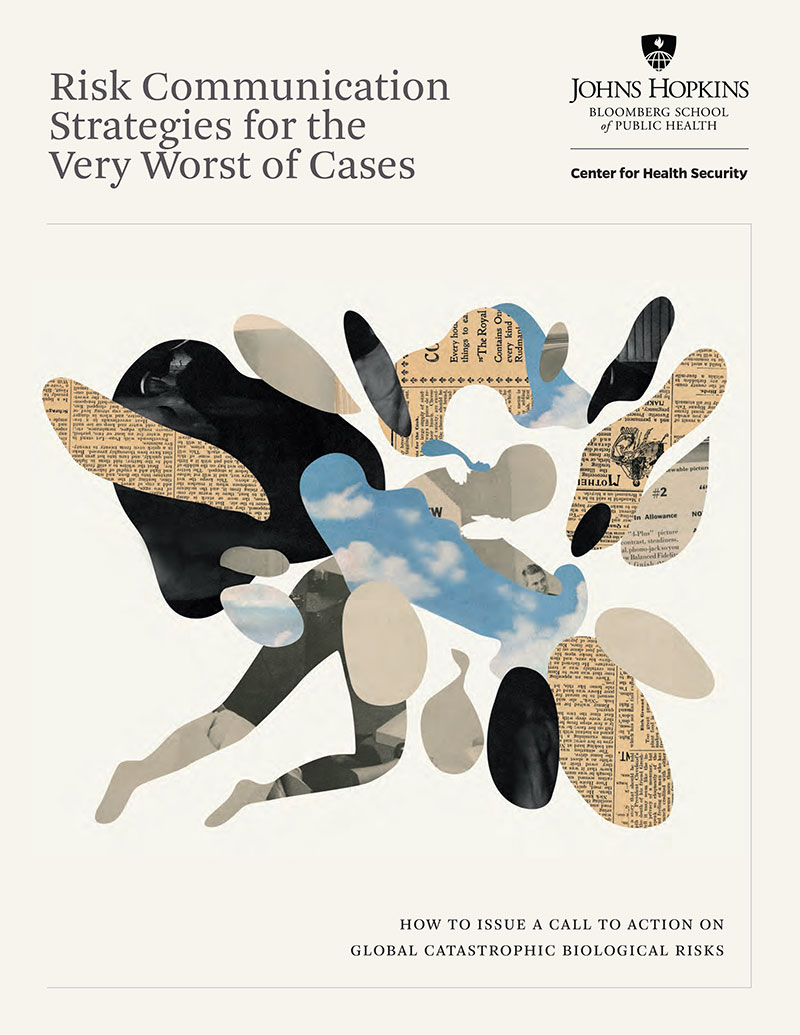Center for Health Security makes recommendations for heightening awareness and motivating action around global catastrophic biological risks
Communication guidance addresses existing challenges and enumerates core objectives of key message development for influencers concerned about existential biothreats
Center News

March 4, 2019 – A new report by a team of researchers at the Johns Hopkins Center for Health Security reframes the discussion of the most severe biological threats to provide policy advocates with an additional tool to help them catalyze expansive international support for work on pandemic prevention and response.
The report, Risk Communication Strategies for the Very Worst of Cases: How to Issue a Call to Action on Global Catastrophic Biological Risks, outlines current awareness gaps—present inside and outside the scientific community—and identifies opportunities for communication to close them. GCBRs represent a special category of risk defined previously by the Center as threats from biological agents that could lead to sudden, extraordinary, widespread disaster beyond the collective capability of national and international organizations and the private sector to control.
“Humanity’s fate is increasingly subject to microbial impact, yet society’s response is incommensurate with the potential dangers,” write the authors. “In this setting, our study takes a first step toward determining how better to heighten awareness and motivate action about GCBRs.”
They add, “To conceive and implement activities necessary to prevent or respond to biological threats of a global scale will require effective communication of the issue’s importance—internationally—to a range of people with knowledge, influence, and control of resources.”
The project team, led by Senior Scholar Monica Schoch-Spana, PhD, developed their effective communication recommendations based on insights gleaned from speaking with relevant, accomplished experts and research into prominent historical examples of when it became essential to alert policymakers, practitioners, and the public to the possibility of a catastrophic or existential threat.
Interviews with more than 40 experts from 11 countries and across 19 disciplines revealed important, overarching themes. The experts differed on their definition of what constitutes a GCBR, with the focus among those interviewed diverging between an emphasis on well-known, naturally occurring pandemics and engineered (i.e., man-made) pathogens resulting from advances in biotechnology. Overwhelmingly, they agreed that rallying a coordinated response will be difficult in a fractured world, even though a GCBR could emerge anywhere and ultimately affect everyone. They also shared the belief that explaining GCBRs as a pressing and tractable problem whose forward-looking solutions offer benefits today accords the issue greater public priority.
Historical research was distilled into 3 case studies: on climate change, bioterrorism, and nuclear winter. Narratives in the report examine these global scale threats from the perspective of experts who played a key role in first characterizing the risk and then moving it into the public domain. From these experiences the project team discerned potential strategic communication lessons applicable to the GCBR case.
The report concludes with a dozen specific recommendations grouped into 3 broad categories:
- Cast GCBRs as a concrete, present-day, directly personal problem, diminishing any perceived remoteness.
- Present GCBRs as a challenge where solutions are possible, enhancing a sense of self-efficacy.
- Strengthen and share the science of GCBRs and their mitigation in meaningful ways.
Intended end-users of these recommendations, write the authors, “include subject matter experts who wish to use their technical acumen and social standing to prompt a greater societal response to GCBRs and to enlist more colleagues in doing so, philanthropists who seek to deepen the impact of their initiatives in fields that touch on GCBRs such as health and security from individual to global levels, and political advocates who hope to make the case more successfully for applying a portion of public resources to help mitigate the risk of a globally catastrophic biological event.”
Much of the Center’s current work focuses on challenges related to GCBRs. Earlier this year, the Center published a report that established a framework for identifying naturally occurring microorganisms that could become GCBRs. The Center’s Clade X pandemic tabletop exercise in the spring surfaced important policy issues and preparedness challenges that could be solved with sufficient political will and attention. In October, a Center project team released its report highlighting 15 promising technologies that, with strategic investment, could help make the world better prepared and equipped to prevent future infectious disease outbreaks from becoming GCBRs.
Members of Schoch-Spana’s team for this project were Senior Analysts Diane Meyer, RN, MPH, and Sanjana Ravi, MPH; Analyst Michael Snyder, MALD; former analyst Christopher Hurtado, MHS; and Kirsten Moore-Sheeley, PhD.
The project was supported by funding from the Open Philanthropy Project.
About the Johns Hopkins Center for Health Security:
The Johns Hopkins Center for Health Security works to protect people from epidemics and disasters and build resilient communities through innovative scholarship, engagement, and research that strengthens the organizations, systems, policies, and programs essential to preventing and responding to public health crises. The Center is part of the Johns Hopkins Bloomberg School of Public Health and is located in Baltimore, MD.
